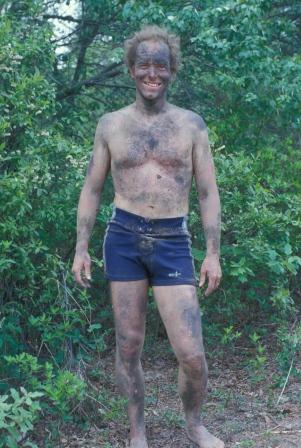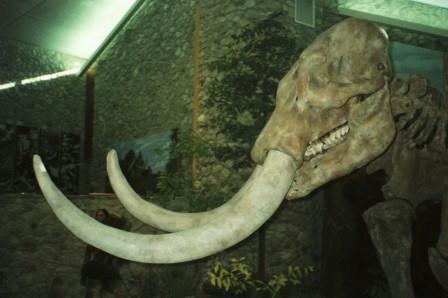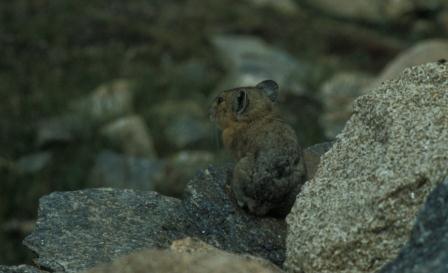by Carl Strang
At some point, paleontological studies come back to our own ancestry. Here are my notes on some studies published last year.
Schmid, P., et al. 2013. Mosaic Morphology in the Thorax of Australopithecus sediba. Science 340:164-165. Irish, J. D., et al. 2013. Dental Morphology and the Phylogenetic “Place” of Australopithecus sediba. Science 340:164. These are two of a series of studies of this hominin reported in this issue. They studied skeletal portions of a single specimen from South Africa of 2 million years ago. It proves to be a mosaic of primitive and modern human features, so they conclude it is an ancestor or early form of Homo, closer to our genus and to Australopithecus africanus than is the east African Australopithecus afarensis. The structure of the arms, shoulder blades, and the narrow upper ribcage suggest this was a tree climbing species that could not run for long distances. At the same time it had the narrow waist of a human. The feet turned sharply inwards, distinguishing it from other Australopithecines. The structure of the teeth was a major line of evidence indicating the connections between sediba and Homo.
Lordkipanidze, D., et al. 2013. A complete skull from Dmanisi, Georgia, and the evolutionary biology of early Homo. Science 342:326-331. They have studied several skulls from European Georgia that provide data on individual variation of Homo erectus. It seems likely that fewer Homo species existed than had been thought, and that erectus evolved about 2 million years ago and then (alone) spread out of Africa, eventually reaching Asia 1.2 million years ago.
Meyer, Matthias, et al. A mitochondrial genome sequence of a hominin from Sima de los Huesos. Nature, 2013; DOI: 10.1038/nature12788 From a ScienceDaily article. They sequenced mitochondrial DNA from bones recovered in a cave in northern Spain. The bones, 400,000 years old, were revealed to have connections to the Denisovans, previously known only from Asia. The common ancestor between these Homo heidelbergensis bones and the Denisovans was estimated to live 700,000 years ago. The connection could reflect an ancestral split between genetic lines, or an inflow of Denisovan genes through population movements.
Rito, T, et al. 2013. The first modern human dispersals across Africa. PLoS ONE 8(11): e80031. doi:10.1371/journal.pone.0080031 Their analysis using updated technology points to the “mitochondrial Eve” in central Africa 180,000 years ago, a time of low population density. There then was a separation by 130,000 years ago between some groups that have remained in extreme southern Africa, and others in central and east Africa who became the ancestors of all modern humans. Subsequent dispersal episodes correspond to, and may have been stimulated by, a series of droughts 135,000-75,000 years ago.
Prüfer, Kay, et al. 2013. The complete genome sequence of a Neanderthal from the Altai Mountains. Nature DOI: 10.1038/nature12886 From a ScienceDaily article. They developed a complete Neanderthal genome from 50,000 years ago, and comparisons to the genomes of modern humans and Denisovans reveals a complex pattern of occasional interbreeding. Neanderthals and Denisovans prove to be very closely related, the split between them estimated at 300,000 years ago. Their common ancestor population split from the modern human line 400,000 years ago. 1.5-2.1% of non-African modern human genetics comes from later interbreeding with Neanderthals. Denisovans also contributed small portions of genes to Asian and Oceanic modern humans, the largest an estimated 6% in Australian aboriginals, New Guineans, and some Pacific islanders. Asians and Native Americans have a portion of 0.2%. The Denisovans also are found to have interbred with an unknown fourth group, possibly Homo erectus, that had split from all the others a million years ago. The genetics suggest that Neanderthal and Denisovan groups were small, and inbreeding was relatively common.
Raghavan, Maanasa, et al. 2013. Upper Palaeolithic Siberian genome reveals dual ancestry of Native Americans. Nature DOI: 10.1038/nature12736 From a ScienceDaily article. The DNA of a Siberian boy of 24,000 years ago shows elements connecting his ancestry to various parts of Asia, and also to Europe. It also has enough in common with Native American DNA to place the boy’s population as ancestral to Native Americans. Those Siberians were part of a widely wandering Eurasian people in the Ice Age, who naturally would have extended the wandering across the Bering Sea when glaciers drew it down to provide the land connection to North America.
Battaglia, V, et al. 2013. The First Peopling of South America: New Evidence from Y-Chromosome Haplogroup Q. PLoS ONE 8(8): e71390. doi:10.1371/journal.pone.0071390 They found that Central and South American Native Americans are connected to ancestors in southern Siberia as well as to North Americans. The results support two waves of immigration from North America, one reaching Mexico and a later one rapidly populating areas farther south.
Bollongino, Ruth, et al. 2013. 2000 Years of Parallel Societies in Stone Age Central Europe. Science DOI: 10.1126/science.1245049 From ScienceDaily article. People in Europe all were hunter-gatherers until 7500 years ago (modern humans arrived there 45,000 years ago, survived the ice age, and warming began 10,000 years ago). Immigrants brought agriculture from the south around 7500 years ago, and this study found that the hunter-gatherers persisted in that culture alongside the agriculturists for 2500 years before switching to agriculture themselves. The two societies lived side by side and buried their dead in the same cave. Genetic and chemical studies indicate that hunter-gatherer women sometimes married into the agriculturists, but not the reverse.
Pugach, Irina, et al. Genome-wide data substantiates Holocene gene flow from India to Australia. PNAS, January 14, 2013 DOI: 10.1073/pnas.1211927110 They found that Australian aboriginals, who were established in that continent by 45,000 years ago, were not isolated for all of that time. Their genetics indicate that around 4000 years ago there was immigration (“substantial gene flow”) from India. That timing coincides with the arrival of the dingo, and changes in plant processing and stone tool technologies.












